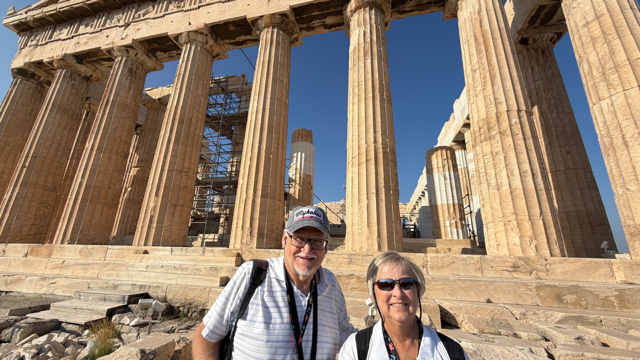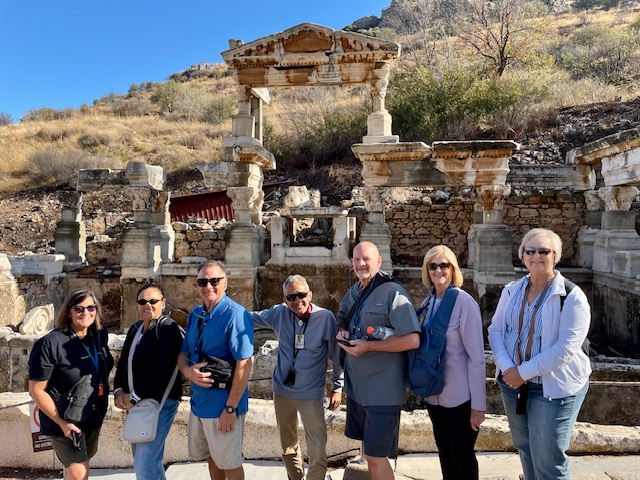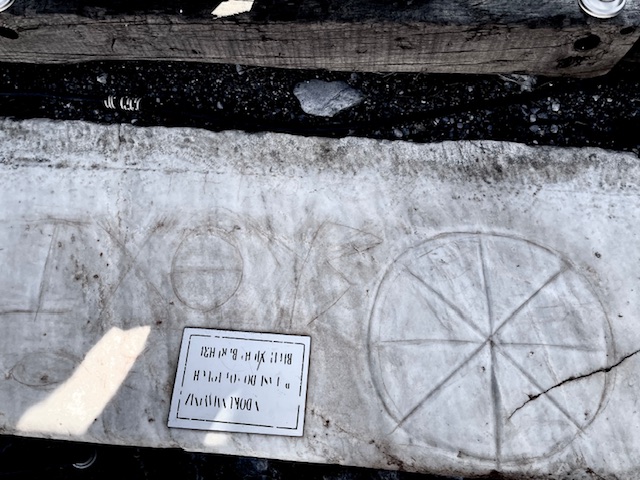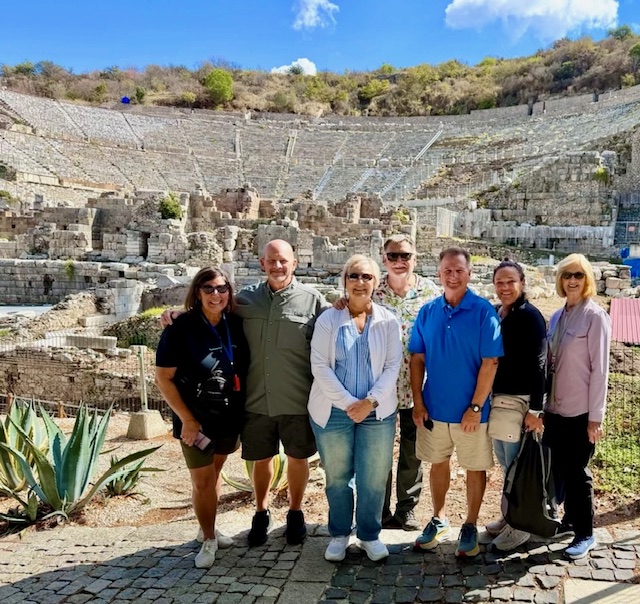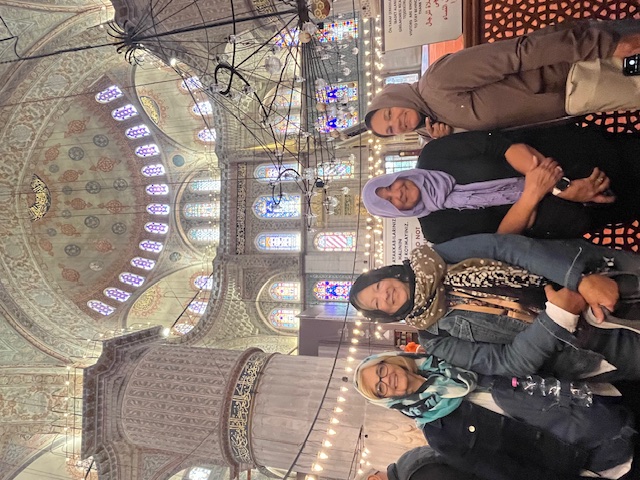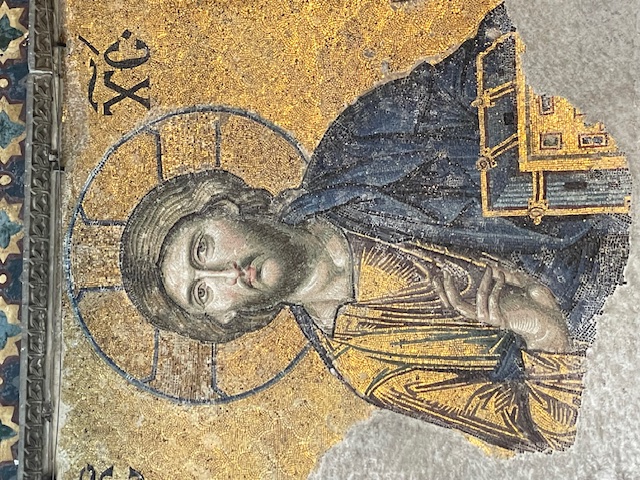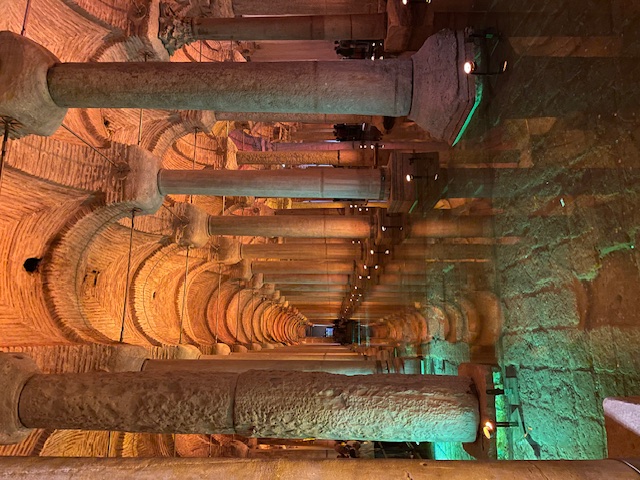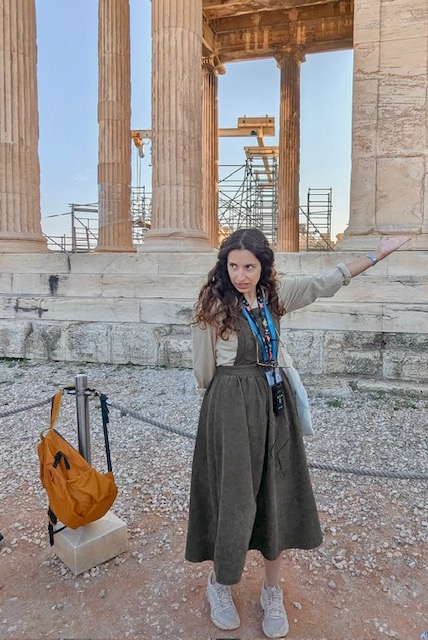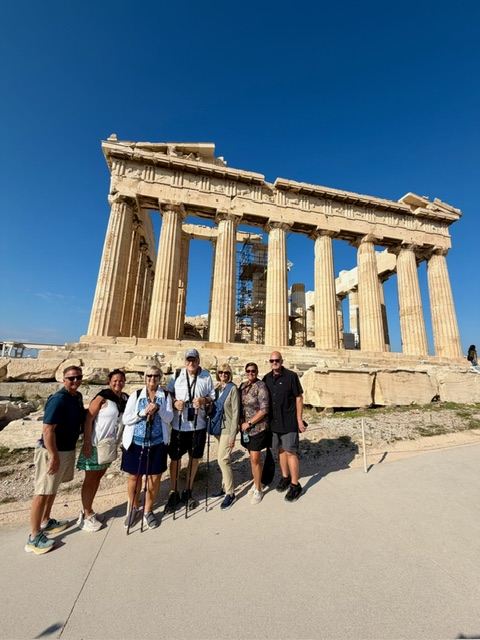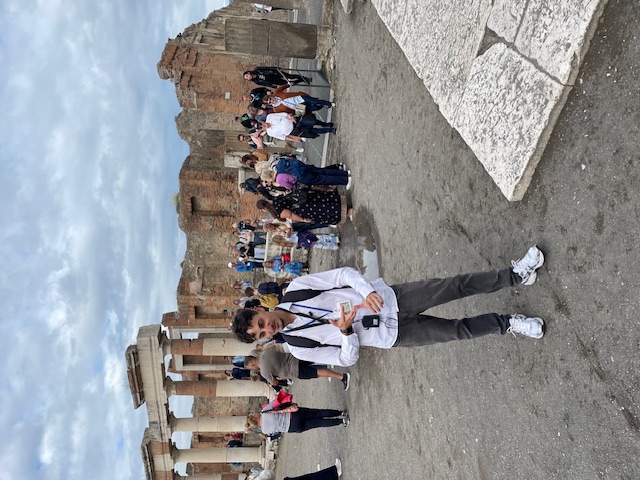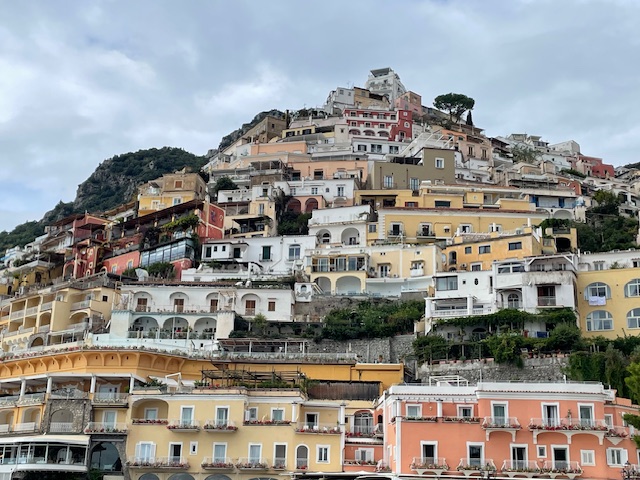by Dale Reeves
Story Pastor
My wife Karen and I just returned last Saturday night from a 12-day Mediterranean cruise with some of our family members in which we visited several sites where the apostle Paul walked, including Ephesus, Turkey; Rome; Neapolis and Athens, Greece. We loved this cruise because we were able to visit seven ports in three different countries: Italy, Greece, and Turkey. Thanks to much of my wife’s research through European travel writer Rick Steves’s resources and YouTube videos (and to some navigational skills of my two brothers-in-law), we were able to visit three of the sites on our own without the help of a guide. But, we decided to book a tour guide to help us explore four of the cities we visited. Each of those guides were very helpful, and each of them brought a different flavor to our tours.
If you look up the word guide in Webster’s Dictionary, you will find these definitions:
- a) one that leads or directs another’s way
- b) a person who exhibits and explains points of interest
- c) something that provides a person with guiding information
- d) a person who directs another’s conduct or course of life
Each of our four European guides fulfilled the first two definitions with excellence; our own research helped us with information based on the third definition; and for the fourth definition of a “guide,” you’ll need to read the blog until the end.
Korhan
After sailing on the Carnival Miracle for two days in the Mediterranean Sea (passing through both the Tyrrhenian and Ionian Seas), on the third day of our cruise, we disembarked at the port of Kusadasi. Located in the country of Turkey, Kusadasi is a large resort town located on Turkey’s Aegean coast. It is just thirty minutes away from the ancient site of Ephesus, one of the seven churches of Asia mentioned in the book of Revelation. The apostle Paul stayed in Ephesus for approximately three years during his third missionary journey, longer than in any other city. You can find out more about what happened there in Acts 19, 20, as well as in Paul’s letter to the Ephesians, which Paul wrote while under house arrest in Rome.
Our Turkish guide, Korhan (pronounced Kor-john), was a delightful older man who met us at the port at 7:00 am, and had his driver take seven of us in a minivan to the ancient site of Ephesus. Since the gates to the tour didn’t open until 8:00 am that day, Korhan told us he would take us to a place where a man would speak to us in English and give us some more background. The gentleman was Australian, and the “information” turned out to be a sales pitch for exquisite Turkish carpets that were amazing, but that none of us chose to buy. After sampling some Turkish coffee (which is very strong), watching several peacocks that were strutting about on the property, and all of us declining the offer to purchase a carpet for our home that would “arrive at our doorstep in six weeks,” we were on our way to Ephesus.
Korhan was very informative, full of entertaining stories that he told while we listened on headsets, and he was very patient in gathering the seven of us at each site of interest. I asked him about a place in the city I had heard of where we could see the name ICHTHUS engraved on a stone from the first century, and he knew right where we could find it. (The Greek word ichthus means “fish.” Early Christians used it as an acronym for the phrase “Jesus Christ, Son of God, Savior.” The symbol served as a secret identifier during times of persecution.)
After touring the amazing ruins of the biblical town Ephesus, the library of Celsus, the fountains and baths, the toilet “holes” in the marble that were used in those days, and seeing some of the Terrace Houses with beautiful art on the walls and mosaics on the floor, we viewed the ancient amphitheater that had a capacity of 25,000 spectators, where a riot ensued after Paul’s preaching against the many idols that were being worshiped in Ephesus.
Korhan then guided our minivan back to the site where we learned about Turkish carpets, and we were served a great lunch. As we left Korhan after the tour, he asked us to give him great reviews online because he wanted to “crush the younger tour guides” that are out there. We loved the little snicker he displayed as he said that to us.
Sait
Two days later we visited the most populous city in the country of Turkey—Istanbul—which has a population of nearly 16 million. Over 90% of the people are Muslims, but when I asked our Turkish tour guide Sait how many of them actually pray five times a day, facing Mecca, he said, “Only about 9% of them.” I told him about what we call “Chreasters” in America, those who attend church just on Christmas and Easter, and Sait was amused by that word. Sait led us through a very long line of people visiting the Blue Mosque, which is Istanbul’s most photographed building. The women in our group had to wear scarfs over their heads, no shorts were allowed, and all of us had to take off our shoes to enter the mosque.
Then we toured the Hagia Sophia, which means, “The Church of Holy Wisdom.” This Byzantine structure was built as a Christian church in the 6th century, but in the 1400s the Ottoman Turks conquered the city and turned the Hagia Sophia into a mosque. Many of the beautiful Christian images on the walls were then covered with layers of lime by the Muslims, but they were not destroyed. Many centuries later the mosque was turned into a museum, then in the year 2020 Turkey’s president made the controversial decision to convert the building back into a mosque again.
Today, the building reflects the religious changes that have played out in the region over the centuries, with the minarets and inscriptions of Islam, as well as the lavish mosaics of Christianity. Some of the Christian imagery is covered by curtains today, but one of the pieces we enjoyed seeing is called “The Deesis” Mosaic which was created in the year 1261. (Deesis is a Greek word that means “pleading or praying for.”) Jesus is portrayed here not as a harsh judge, but as a compassionate Savior with real emotions, one who is pleading for our salvation. We were very fortunate to view this masterpiece, but we know that regardless of whether it is covered or not, the presence of Christ endures. No amount of coverage can extinguish the power of Christ’s compassionate gaze. This icon spoke to the Byzantines, to the Crusaders, to the Ottomans, and today it still speaks to us.
After exiting the Hagia Sophia, Sait led us through the crowded, but incredible Basilica Cistern, a 6th-century marvel beneath the bustling streets of Istanbul that was once used for storing water in the city. Finally, Sait lifted his umbrella overhead for us to follow him through some rain-soaked cobblestone streets to a fantastic Turkish meal in which I enjoyed a very tasty beef and lamb kebab with salad and a baldo rice pilaf. Then Sait allowed us to meander for about a half hour in the massive Grand Bazaar, that features very pushy vendors, but lays claim to being the world’s oldest shopping mall. Sait’s style was one of intentionality in successfully guiding us through a labyrinth of very populated areas.
Elena
On day nine of our cruise, our ship disembarked at the coastal town of Piraeus, Greece. We took a taxi to the area of Athens that is dominated by the Parthenon and the Acropolis Museum. Our young Greek tour guide in Athens, Greece, Elena, was cute, dramatic, filled with historical details, and very patient with us as we took our time climbing the Acropolis toward the Parthenon. She was aware of the ages of the people in our group, since a few of us were using walking sticks, so she made sure to stop at several points along the way, as we ascended up the large stones and marble surfaces to the top of the Acropolis. Elena, a form of the ancient Greek name Helene (which means “shining light”), pointed out to us where the apostle Paul spoke on “Mars Hill,” the Areopagus (see Acts 17).
It is one thing to see pictures of the Parthenon, but it is quite different to actually be standing in front of this massive structure that was originally built between 447 and 432 BC to house a monumental gold and ivory statue of the city’s patron goddess, Athena. The building features eight columns (each over 30 feet tall) on the east and west, and seventeen columns along the north and south sides, and is over 220 feet long and 101 feet wide. Elena was very concerned about speaking the truth and wanted us all to make sure we knew the difference between the Acropolis (the high rocky hill itself) and the Parthenon—which far too many people confuse.
Our guide Elena walked us through the surrounding neighborhoods on our way to the Acropolis Museum, which was also amazing, then she was very helpful in pointing out which way we should head next as we wanted to grab a bite to eat and shop a bit in the section of town known as the Plaka (Instagram famous for its bougainvillea pictures), which rests in the shadow of the Acropolis.
Ciro
Our final day of the 12-day cruise brought us back to Italy, where we disembarked in the southern coastal town of Napoli (Naples), on the west coast of the Italian peninsula. Several of us booked a tour bus that took us to the Amalfi Coast, where we were able to spend a few hours in the picturesque postcard towns of Positano and Sorrento, followed by a tour of the ruins of Pompeii, the city that was buried under massive ash as a result of the volcanic eruption from Mount Vesuvius in 79 AD. These ruins have provided invaluable insight into early Roman life.
Our Italian guide on this nine-hour tour, Ciro (pronounced Chee-rrro), was a handsome young man who had a winsome smile as he greeted us enthusiastically as we disembarked from the Carnival Miracle very early in the morning. He welcomed the 21 of us on this minibus tour with the name “family,” which he used to address us all day long. The other phrase Ciro kept repeating with a slight grin on his face was “piano, piano,” which he said is “The Italian way.” It means “slowly, slowly.” Take your time, enjoy the journey, have a zest for life. This provided a very fun and fitting conclusion to our tours of seven ports on our cruise. Our feet and bodies were very tired, but we felt refreshed on our bus ride back to the ship as Ciro led his “family” to sing along with his Spotify list that included some famous Italian songs such as “That’s Amore,” “Volare,” other songs that mentioned Napoli . . . and songs by his “cousin” Michael Jackson—“Beat It” and “Thriller.” Ciro was definitely my brother from another mother.
All four of our tour guides displayed different personalities, as they led us to the right places, gave us some great historical context, told stories, and taught us a few words in their native languages. They helped us navigate the crowds, and made great suggestions for shopping and eating.
Now about that fourth definition for a “guide”: d) a person who directs another’s conduct or course of life.
Who is your guide?
For me personally I immediately think of two things that guide my everyday life—the Word of God, and the Holy Spirit. King David writes in Psalm 32:8, “The Lord says, ‘I will guide you along the best pathway for your life. I will advise you and watch over you’” (NLT). This is why we must be reading the Bible every day. If we will do so, God promises to be the best guide ever.
And, our Lord Jesus promised us in John 16:13, “When the Spirit of truth comes, he will guide you into all the truth, for he will not speak on his own authority, but whatever he hears he will speak” (ESV).
Walk in God’s ways. Happy travels, friends.


